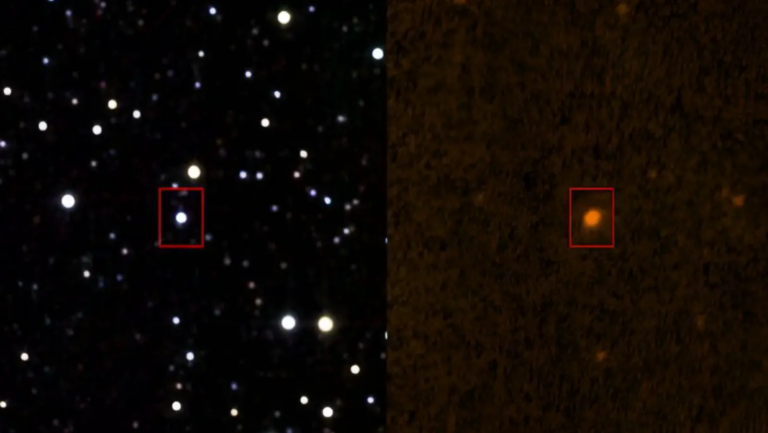Astronomers Discover Seven Possible Alien Megastructures in the Quest for Dyson Spheres
Could These Seven Stars Host Alien Megastructures? Latest Research Identifies Potential Dyson Spheres
Seven stars that exhibit strange IR emissions consistent with Dyson spheres and other alien megastructures have been discovered by astronomers. These were postulated by physicist Freeman Dyson and would surround a star the way a pearl does a grain of grit and then radiate extra heat as infrared radiation out into space. The work is based on M-dwarfs, stars within one light year from the Earth, and stresses the necessity of continued research without hyperbole.
Currently, there are three major approaches to finding signals from other technological civilizations: One approach is to search for SMs that are clear communication signals— for instance, if there was a radio broadcast. Another is to look for evidence that they have passed through the solar system. The third approach is centered on the identification of massive space engineering prospects.
The third way was used by a team of astronomers who used data from the most recent astronomical surveys and selected seven possible Dyson’s alien megastructures, or spheres worthy of further study. ” The data was published in the Monthly Notices of the Royal Astronomical Society.
This research looks for what could be called “rogue stars” – stars that potentially have something unusual, like alien megastructures orbiting around them, while not overstretching the concept. The seven stars are classed as M-dwarfs, which are cooler and fainter than the Sun, all within a light-year of our planet.
Dyson spheres were coined by physicist Freeman Dyson in 1960 as a method by which an advanced civilization can collect energy from a star. These structures; factories for producing goods, homes for living and power collectors to create energy, would circle the star almost entirely, forming a spherical shape.
Dyson understood that this kind of megastructures could be distinguished. As you noted in the recent study, the team looked for this—we call it the ‘signature. ’ Megastructures would reflect some of the visible light – however not all – from the star and would therefore emit the rest of the energy as infrared.
Other features of Dyson spheres are that whenever the megastructure is aligned between a observer on Earth and the star, visible light may be dimmed. Such a signature has been seen in the past, although not as long ago as Kellett originally suggested for Boyajian’s star: it took ten years of monitoring for an ambiguity to surface which could, in theory, be only half as long as the implied time for Tabby’s void to fall fancy: ultimately, both stars encouraged excitement through their huge light dips, perhaps due to some sort of an alien megastructure .
Of course, this object is no alien megastructure but it orginated concepts like a cloud of comets. However, it remains an odd signal, and identifying this evidence would apparently be the next move in this direction of the seven prospects.
The case against Dyson spheres:The case against Dyson spheres:
On the other hand, Dyson spheres might not even exist; for instance, extraterrestrial beings maybe using the external energy shells in a completely different way, or may be nonexistent at all. It is not to say that they can not have been real but few civilisations capable of constructing them would ever have to, unless it was for a grand artful reason.
Thus, Dyson’s argument was one that presupposed that the later types of civilizations would need great amounts of energy. At roughly the same time, a Soviet astronomer named Nikolai Kardashev offered up a scale based on power consumption levels to determine the level of advancement of a civilization.
This was a reasonable concept in the context of the sixties as technology and population growth was characterised by growth in the use of power in terms of consumption. This trend was anticipated to continue in future by people.
But in the last 50 years – and more so in the last 10 years – the global energy use has plateaued. Dyson and Kardashev provided no ‘use’ of such a large amount of power; they merely postulated it is needed by any civilization at some stage.
Today, future technologies pay higher attention to the efficiency, the tinier size and lower energy consumptions. Realizing this much means correctly utilizing a fraction less than of the sun’s energy at the Earth’s distance calls for a capture surface equivalent to that of a billion Earths. Imagine if the megastructure was only one hundred twentieth of a thousand kilometers thick, then the material constituted to form it was a mere million earths.
As is known, in the solar system there are no more than 100 Earths’ equivalent of solid substances; therefore, to build a Dyson sphere, one would have to take apart planets and transport these parts to the star. Conceding the technology of the megastructure and accepting only the material of a single system, this great edifice could only be one meter in thickness.
The resources are exhausted when each item within a planetary system is last employed. If million of systems were needed to provide these amounts of carbon, millions of systems could have to be disassembled. It will be a huge challenge, but not something that a post-singularity civilization would be incapable of.
It would be quite pointless to build a Dyson sphere when your civilization level could allow you to harnessed power other means if at all you still required a star for power. Well, it’s difficult to explain how but, indeed, they are quite super-advanced after all.
Perhaps I have it wrong, though it could not injure to glance.
Do not forget to share your opinion with us to provide you with the best posts !




0 Comments